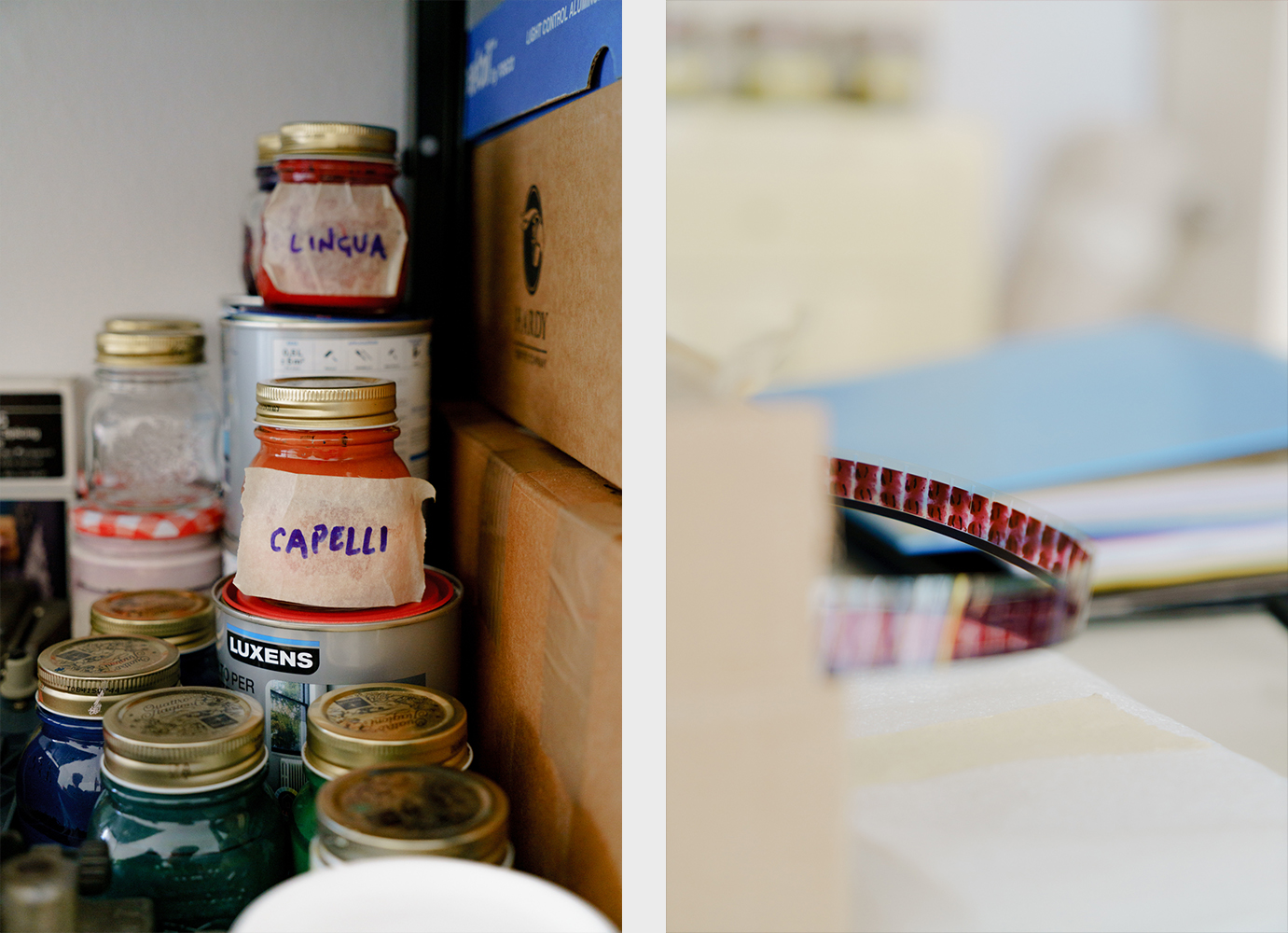Disclosure #02 | Diego Marcon
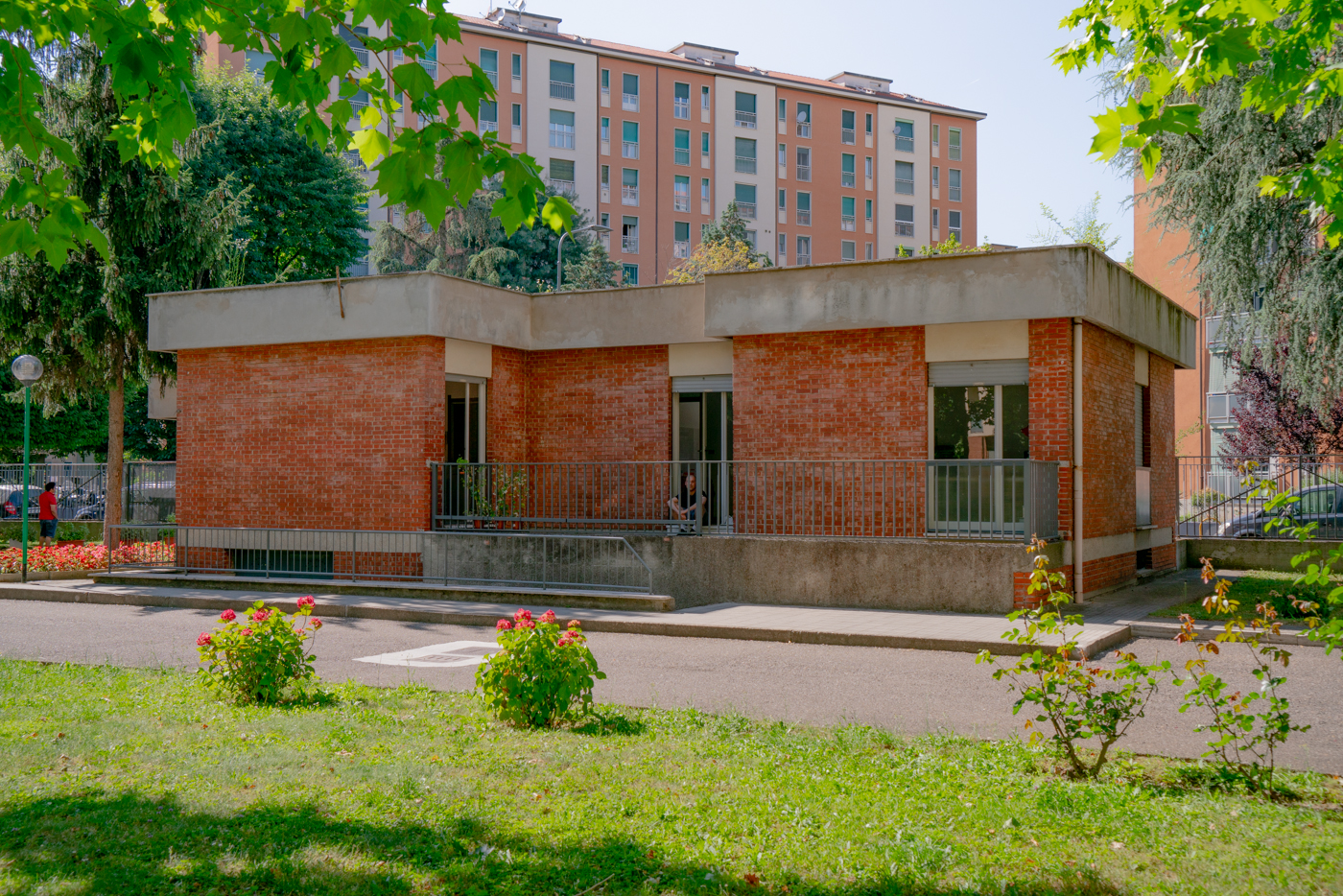 Disclosure is a focus on the artist’s studio, considered both as a place of physical and intellectual production and as an archive of languages and experimentations. The project, with photographs by Riccardo Banfi and interviews by Giulia Morucchio, features Italian-based artists who work with heterogeneous media and practices. Diego Marcon is the guest of the second episode.
Disclosure is a focus on the artist’s studio, considered both as a place of physical and intellectual production and as an archive of languages and experimentations. The project, with photographs by Riccardo Banfi and interviews by Giulia Morucchio, features Italian-based artists who work with heterogeneous media and practices. Diego Marcon is the guest of the second episode.
Diego Marcon is a visual artist working primarily with moving image and filmic exploration. In 2019, he was a recipient of the seventh edition of the Italian Council award with The Parents’ Room, soon on view at MADRE, Naples. Currently, his works are exhibited in Rome at “Fuori” – Quadriennale d’arte 2020 and MACRO Museum.
Marcon questions the cinematographic medium and its language by relating the analytical approaches to filmmaking, proper to structuralist cinema, with a more sentimental or spectacular dimension that comes from entertainment, popular cinema and television genres, such as horror, slapstick comedy and musicals. The distinctive archetypes of these genres are repeated and emphasised, shaping an uncanny dimension.
Starting from documentary, he then moved to fiction, experimenting with different analogue and digital supports and working with several animation techniques. He employed, for example, drawn-on-film animation in Untitled (Head Falling 01; 02; 03; 04; 05) (2015), cell animation in Il malatino (2017), and CGI animation in Monelle (2017), Ludwig (2018) and The Parents’ Room (2021).
The main characters of his works live in a miserable condition. They are trapped in a suspended time, like the kid eternally caught in a loop between life and death in Il malatino, or isolated in darkness as in Ludwig and Monelle. The works deal with a very strong emotional dimension, often gloomy and melancholic, sometimes even nihilistic, which is counterpointed by the use of irony or self-irony.
The protagonists are often children and the aesthetics itself, following the iconography of cartoon illustration, takes us back to the idea of childhood. However, this is not represented as pure or innocent but rather in its ambiguities. The young characters feel alienated and lonely, mirroring a general human condition that the artist defines as pathetic, comical and grotesque at the same time.
Two years ago, Marcon moved into his current home-studio, a single house that once served as the home of the property caretaker of a social housing estate on Milan’s outskirts. And that’s where we met him on a sunny day.
Giulia Morucchio: Over the years, you took part in many residency programs in Italy and abroad such as the Fondazione Ratti in Como, the Fondazione Bevilacqua La Masa in Venice, the Dena Foundation and the Cité international des arts in Paris, and the International Center of Art and Landscape in Vassivière.
At the end of 2018, you moved into your current studio in Milan. What function does it have for you, considering the different spaces and contexts you have worked in the past? Generally speaking, what characteristics should a space have to meet your creative and productive needs?
Diego Marcon: I work mainly with film and video, often without producing any material except what is necessary for the production of the films and videos themselves (i.e. film reels; in case of animation, drawings; and so forth). Therefore I don’t need a lot of space, nor a specific one.
I’ve never had a studio outside my home – apart from a few months last winter, during my residency at Gasworks in London. Even there, I would rather work in my room than go to the studio. When young, my bedroom in a shared flat was my studio. Then all my studios became my living place.
Now I live in a house on the outskirts of Milan. It has a kitchen, a living room, a bathroom, a bedroom, and two more rooms. One is a studio – where I mostly work at the computer – the other is a storage – where I keep projectors, film stocks, sketches, publications and technical material.
An important aspect of the place where I work is that I can be pretty much by myself and always find my things where I left them. Another is the brightness: if the space is too dark, I easily turn blue.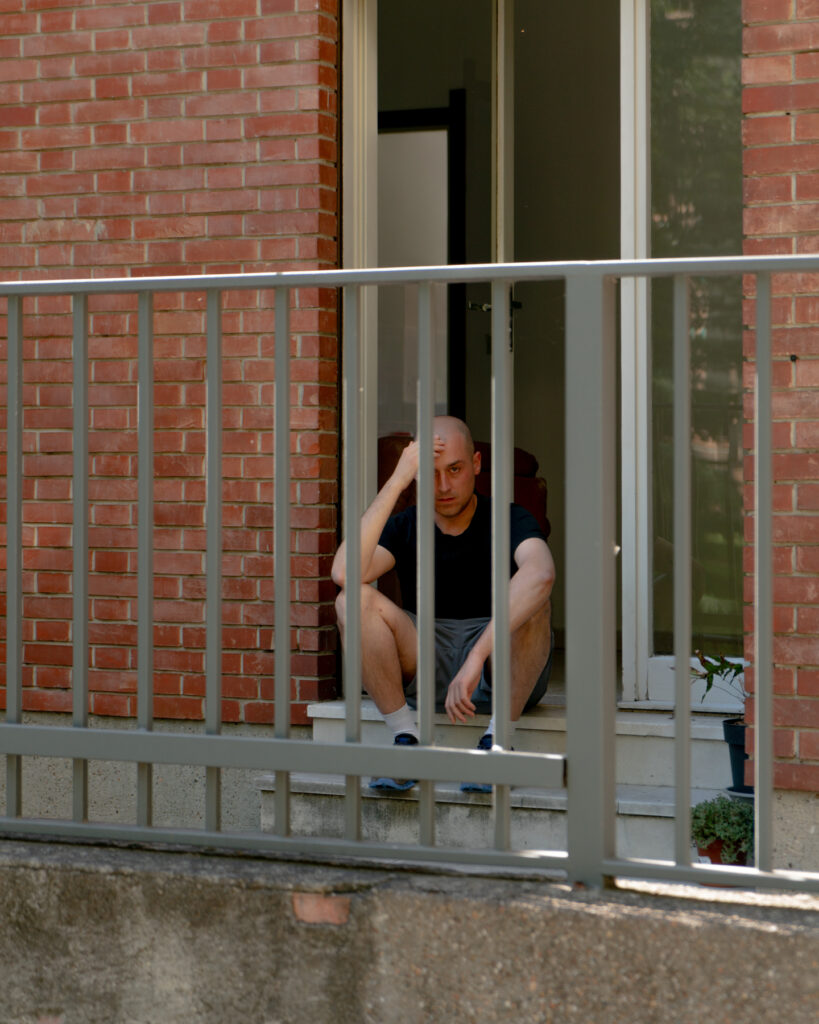
GM: Your studio is also your home. I was wondering how you manage to separate the workspace from the domestic dimension.
DM: I don’t, except in a very direct way … For example, in the kitchen I cook and eat, sometimes I read maybe, but I hardly work there.
GM: What works were born in this context and do they have any relation to it?
DM: Since moving into this house on December 29, 2018, I’ve mostly been working on Oh mio cagnetto, – a book of poems recently published by Lenz Press – and on The Parents’ Room – a film still in progress. I don’t see any specific relation between these works and this space. I like my little house, yet sometimes I hate it. But I don’t think it’s really about the house.
GM: You have a lot of books (essays, novels, poems), but also magazines and memorabilia from cinema, TV programs and music, especially from the ’80s and ’90s.
Among them is a book of the movie The Gremlins, a mirrored poster of Leonardo DiCaprio, the picture of a young Kim Basinger, the action figure of Michael Jackson and many other relics and souvenirs.
This collection mixes elements of high and low culture. I see in it features of your work: it is pop, familiar and yet disturbing at the same time. When did you start collecting them and how do they connect to your artistic research and aesthetics?
DM: I started buying this stuff when I was a teenager. Now I buy less of them. All the objects you mentioned relate to the imaginary of mainstream cinema and spectacle. My work with moving images deals with the archetypes of cinema and its most secular genres and formats.
I love movies that scare you or make you cry. The Gremlins is pretty scary, and DiCaprio did at least a couple of movies that made me cry.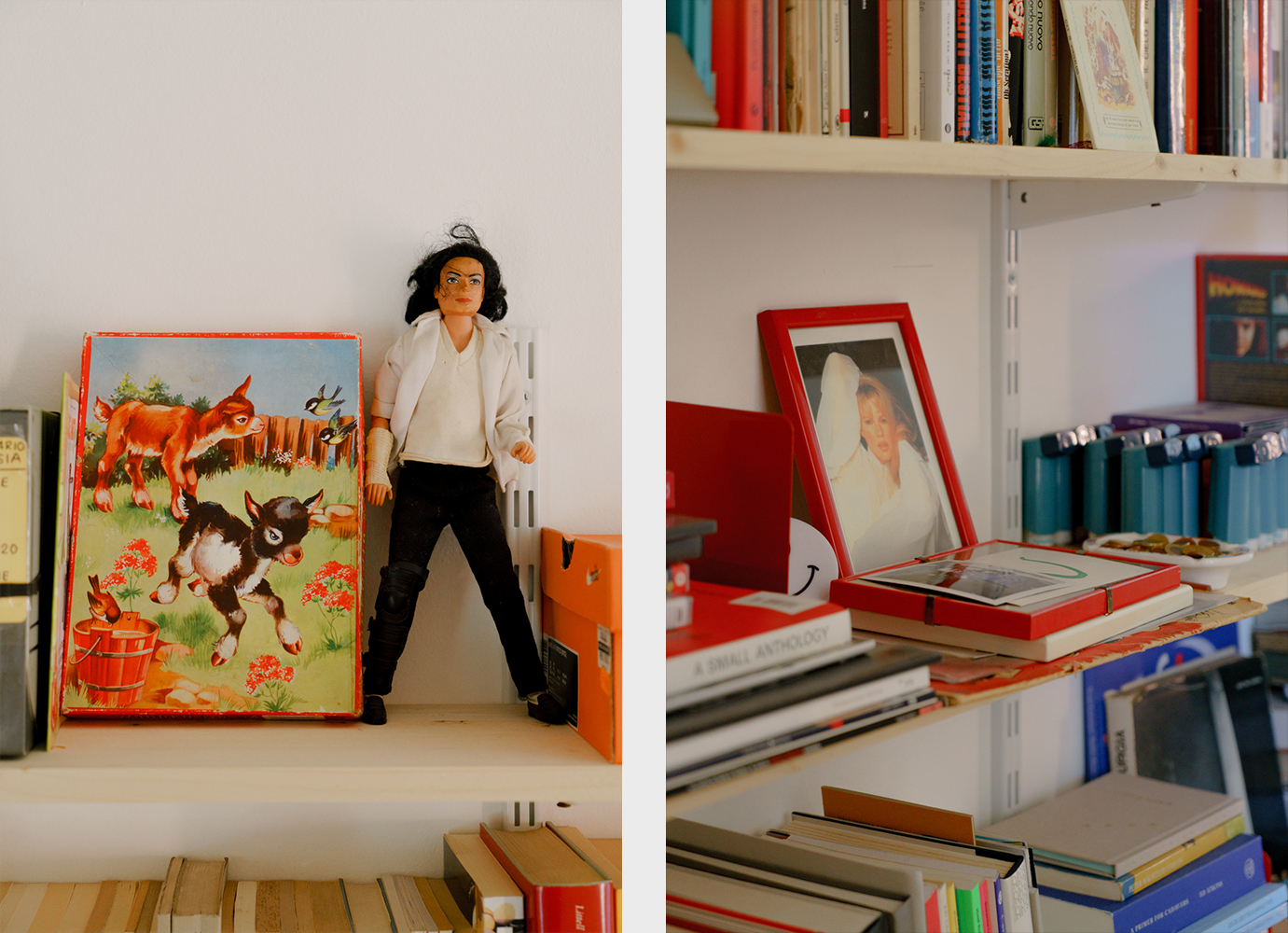
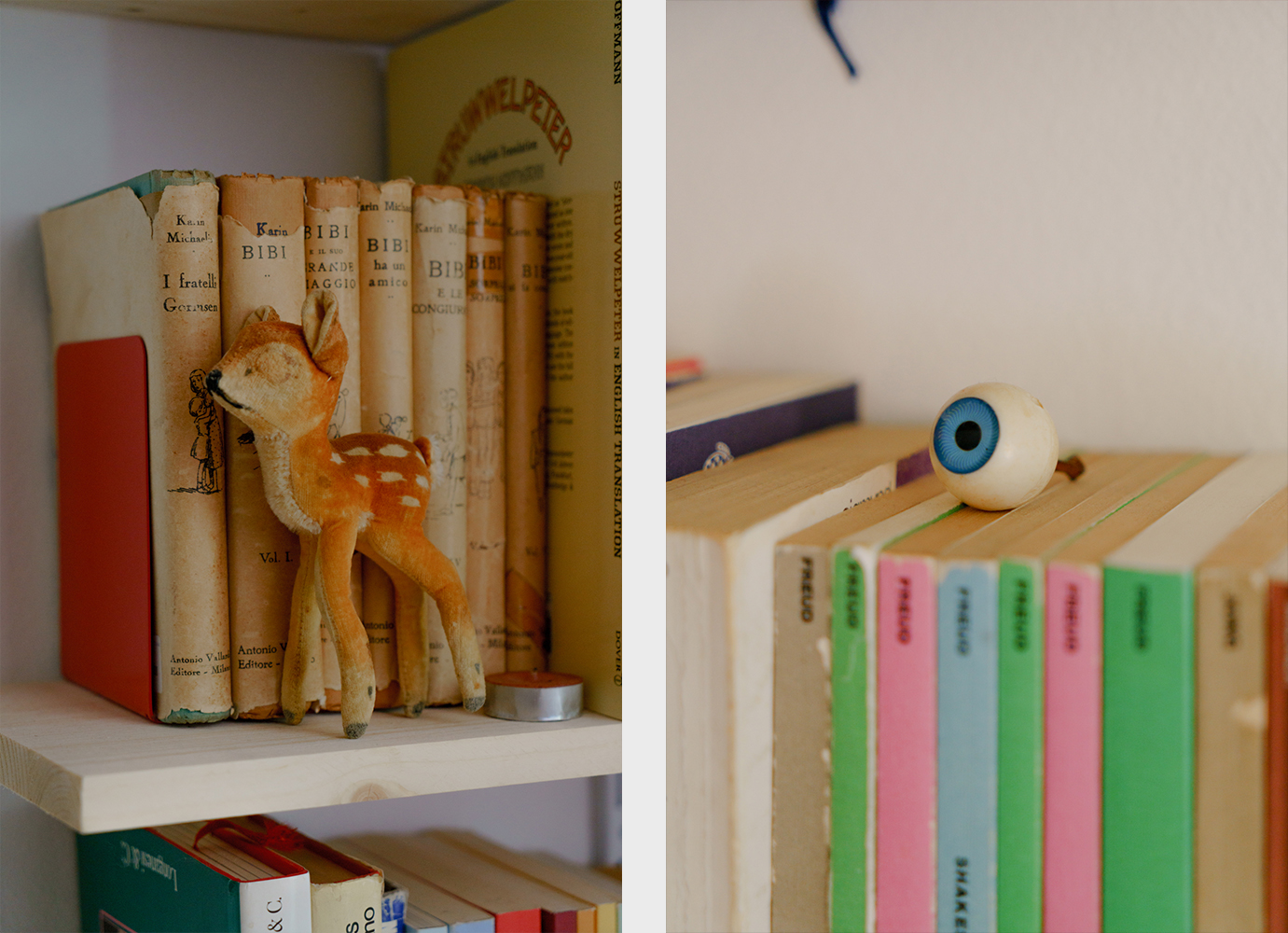
GM: Among these items, there are puppies and a life-size ceramic dog that reminds me of Quattro cani morti (Four dead dogs), presented at THEVIEW, Genoa, in 2018, and the artist’s book Oh mio cagnetto, published by Lenz Press in late 2020.
Can you tell me more about these two projects and your interest in dogs?
DM: Quattro cani morti is a unique piece consisting of four ceramic elements, like those used to decorate a living room or a little garden. They portray four dogs – mostly hunting or shepherd dogs. They are dead, but there is no blood nor graphic elements.
Oh mio cagnetto, is a collection of 81 short poems that revolve around the missed and mourned figure of a puppy, which evokes a broader sense of loss. I conceived the book as an artwork. MACRO Museum in Rome produced it, and it’s now part of its collection.
I like dogs very much, but I don’t have one. They are smart, cute, funny, faithful, helpful… Movies and books are full of dogs like that! Lessie, Rin Tin Tin, Josef, Nana, Beethoven…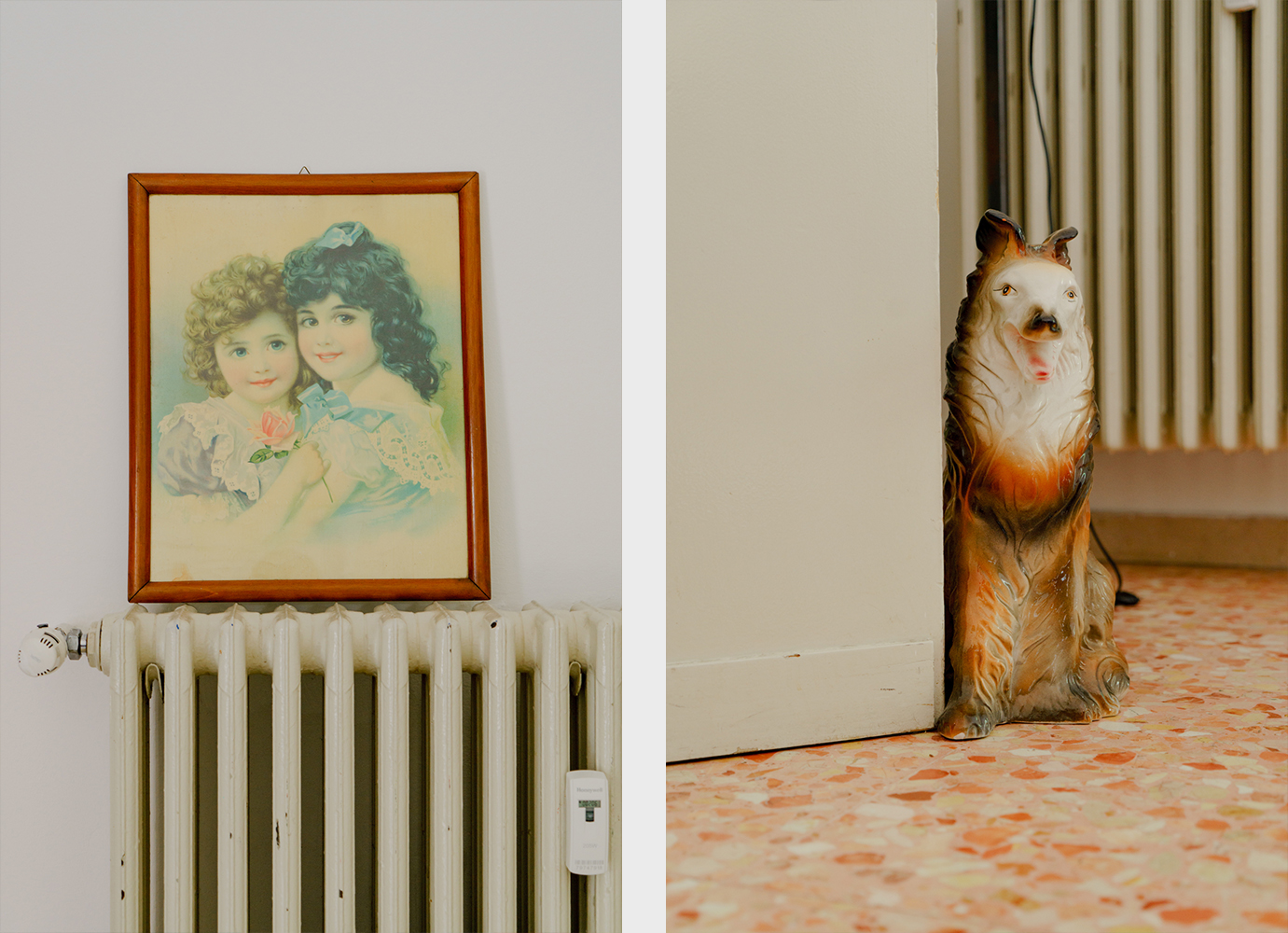
GM: You’ve just brought in the studio the boxes containing the props for your last work, The Parents’ Room, a musical you are currently producing thanks to the Italian Council grant.
Is there any insight you can give us about this piece?
DM: For the piece, I collaborated with longtime friends and collaborators like Federico Chiari for the music score, Lorenzo Cianchi for the prosthetics, Diego Zuelli for the special effects, Pierluigi Laffi for the cinematography, together with some new ones like Jacqui Davies and Camilla Romeo as producers. The Parents’ Room is the most complex film I have done so far. It’s a musical sketch settled in a bedroom featuring a blackbird and a family consisting of a father, a mother, and their two children – a little boy and a little girl. I will present it this spring in a solo show curated by Eva Fabbris and Andrea Viliani at MADRE Museum in Naples. Then it will travel to Boijmans Museum in Rotterdam, BOZAR in Brussels, FID in Marseille, and INCURVA in Trapani, the association promoting the project.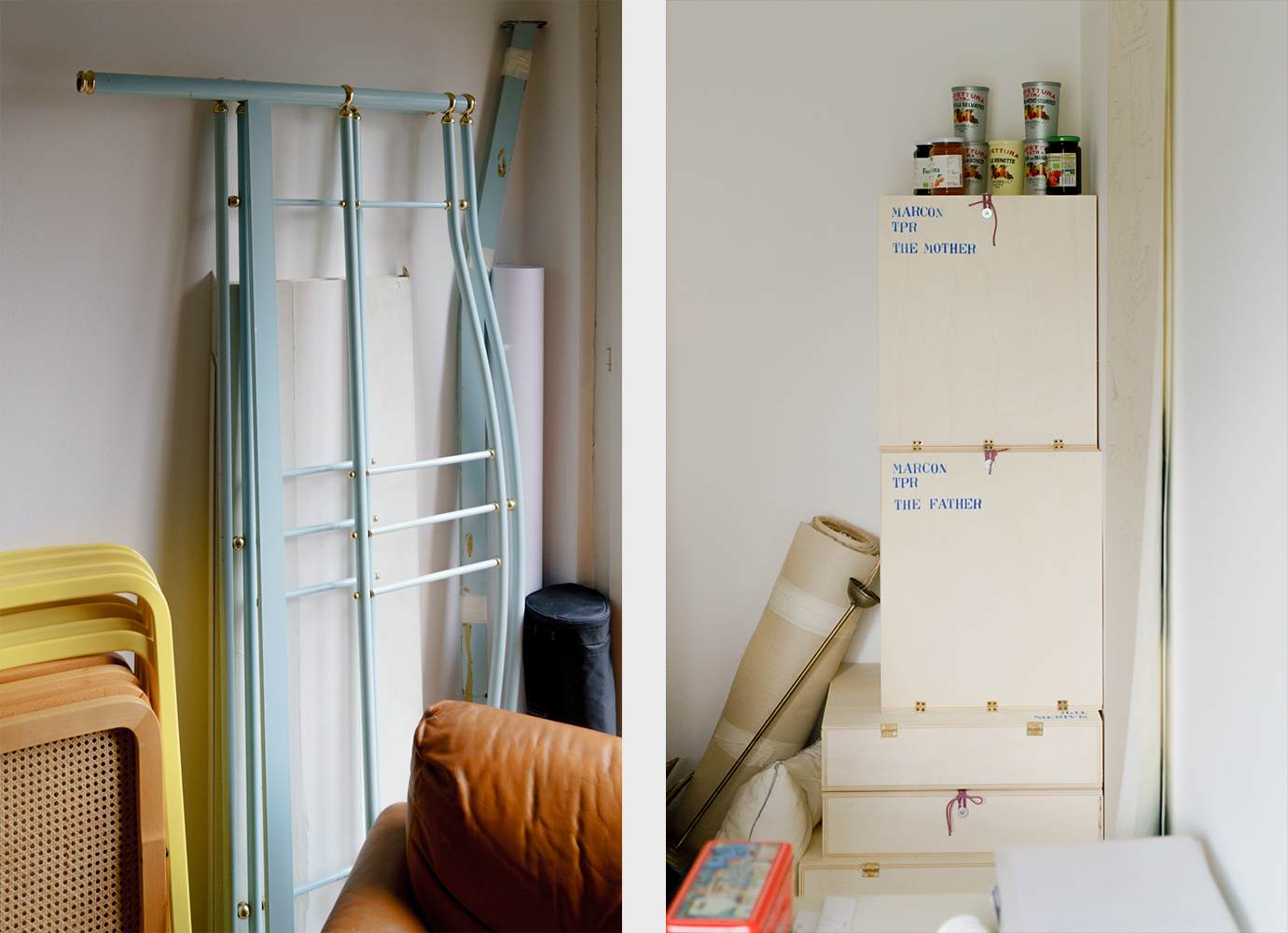
GM: In your moving image projects, you often work with analogue media, using different film formats and devices. What are the precautions you take to preserve these fragile supports?
DM: I don’t take any precautions to preserve these fragile supports. Partially for economic reasons, but mostly because I tend to set the studio as if I had to move out soon. The kitchen is not fixed yet, even if I could definitely arrange a pretty nice one here. I am still using the electric plates – the camping ones – I had in the previous home-studio in a basement. Preserving film, both negatives and positives, painted one and so on, requires dedicated fridges, reels and cans, other tools and material, something I imagine in a nice and stable base, where everything is labelled and ordered meticulously. This idea to build a mausoleum seduces me, but it also makes me anxious.
GM: Your studio is also an archive of your previous works and installations. Do you follow a specific criterion for ordering and storing your past productions?
DM: Yes, everything comes with me every time I move. I try to use a method to store all the material, but any order falls apart. I think it’s because I am constantly divided between the desire to catalogue every stage of my work and its complete destruction and loss.